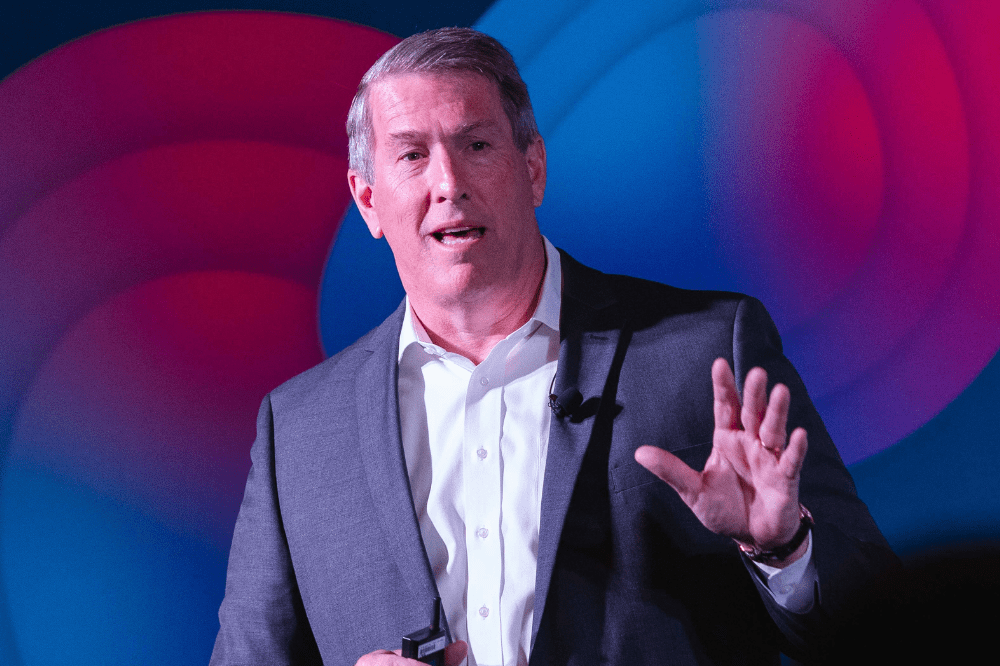What’s keeping Aon;s president up at night?

What’s keeping Aon;s president up at night? | Insurance Business Asia
Insurance News
What’s keeping Aon;s president up at night?
Insurance industry is “losing traction”, he warns
Insurance News
By
Jen Frost
Aon president Eric Andersen (pictured) is the latest broking leader to warn that the insurance industry is failing to keep pace with the changing needs of clients amid an intangible assets boom and insureds facing up to transitional challenges on a global scale.
“Over time, we’re losing traction with our clients and what they really need from us,” Anderson told 100s of brokers in attendance at the 2023 CFC Summit in Chicago on May 18, 2023.
Andersen flagged multiple areas where the industry has been coming up short and could find itself out in the cold:
Finding solutions to address clients’ growing intangible asset needs
Helping clients through the climate transition challenge
Inaction that could see governments step in
Previous complacency on geopolitical risk
A lack of capital and confidence
An intangible asset challenge
One hurdle for the insurance industry, as per Andersen, has been posed by a failure to grapple with the intangible asset challenge and deliver products and solutions that are relevant to what clients care about.
“Our industry has got itself in a box, making money in key spots, understanding what it’s like to do property and casualty,” Andersen said. “When you sit with the CEOs of our clients and [understand] their strategy and how they’re thinking about it, we’re not that relevant.
“People always ask what keeps you up at night – that keeps me up.”
Andersen also drew attention to a “fundamental shift” in how business views wellbeing and talent.
“It is an area that our industry talks incessantly about,” Andersen said. “And I would argue, as of today, it’s mainly situation assessment of the dumpster fire.”
Aon president Eric Andersen on the climate transition challenge
The market may be reacting, but a lack of current insight could be keeping much needed capital at bay on the climate challenge, Andersen cautioned.
“The honest answer is we’re not ready [to help clients] because we don’t have the insight, which is why you are seeing more and more investment in capability, because at our core we are trying to match risk and capital,” Andersen said. “But if you look at the capital of our entire industry – what is it, $3.5 trillion to $4 trillion dedicated to P&C – that’s not enough to solve climate.
“We need materially more capital, we need sovereign wealth funds, maybe PE, we need high net worth, we need a significantly larger pool of capital, but that capital will not come in unless it actually has an opportunity to make money, unless it understands the risks that it’s in.”
The Aon president also shared concerns that if governments are called in to assist with climate protection gaps and transitions then he is “significantly worried that we are going to miss this”.
“We don’t need government support, we need investment in capability so that we can prove to capital providers that they have an opportunity to make a return and prove to the clients our ability to help them manage the volatility of the transition,” Andersen said.
For the Aon president: “Our ability to help them manage through that is one of the biggest things our industry faces over the next five to 10 years.”
Clients must see the insurance industry playing its part to help them during the changes, rather than pulling back, the Aon president warned.
“We’re judging them on what they’re doing today but we’re not really helping them on their new products and innovation,” Andersen said. “We don’t want to do offshore wind farms, you don’t want to do unproven technology; well, that’s the transition.
“You can’t actually say we want them to transition if we’re not going to help them – now, we need to prove that there’s a fair return for capital, totally, but we need to get started on that.”
Understanding geopolitical risks
Geopolitical risks have surged in importance for businesses, amplified by Russia’s war in Ukraine. Geoeconomic confrontation was ranked the third greatest risk in terms of short-term impact in the World Economic Forum’s 2023 Global Risks Perception Survey of 12,000 global business leaders.
“I was actually looking back on support presentation materials we put together about five years ago, we had aspirations of tripling our business in China – and as we have been looking at growth of our industry, the growth of our business, we largely did not take into account geopolitical risk,” Andersen said. “You sit here today from a year ago, [it’s a] materially different framework.
“Business models… talent, the geopolitical issues have come to the front of our clients’ minds.”
Despite the bleak assessment of the present day, Andersen was buoyant that there are significant opportunities for the insurance industry should it rise to the challenge.
“If you look at all those risks on the table, there will be people that say: we can’t do that,” Andersen said. “I think that’s completely wrong, there is such opportunity for us as an industry if we can actually use all the different capabilities … with a focus on trying to bring private market solutions to our clients as they are grappling with these issues, because otherwise they’re not going anywhere.”
Related Stories
Keep up with the latest news and events
Join our mailing list, it’s free!






